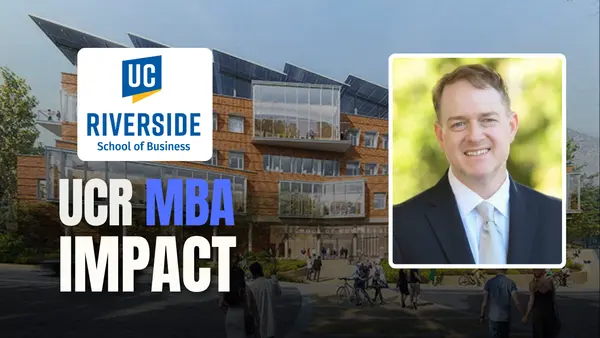Events & Promotions
|
|

GMAT Club Daily Prep
Thank you for using the timer - this advanced tool can estimate your performance and suggest more practice questions. We have subscribed you to Daily Prep Questions via email.
Customized
for You
Track
Your Progress
Practice
Pays
Not interested in getting valuable practice questions and articles delivered to your email? No problem, unsubscribe here.
- Nov 20
07:30 AM PST
-08:30 AM PST
Learn what truly sets the UC Riverside MBA apart and how it helps in your professional growth - Nov 22
11:00 AM IST
-01:00 PM IST
Do RC/MSR passages scare you? e-GMAT is conducting a masterclass to help you learn – Learn effective reading strategies Tackle difficult RC & MSR with confidence Excel in timed test environment - Nov 23
11:00 AM IST
-01:00 PM IST
Attend this free GMAT Algebra Webinar and learn how to master the most challenging Inequalities and Absolute Value problems with ease. - Nov 25
10:00 AM EST
-11:00 AM EST
Prefer video-based learning? The Target Test Prep OnDemand course is a one-of-a-kind video masterclass featuring 400 hours of lecture-style teaching by Scott Woodbury-Stewart, founder of Target Test Prep and one of the most accomplished GMAT instructors.
Originally posted by Khuranasup on 20 Aug 2017, 11:17.
Last edited by broall on 21 Aug 2017, 08:13, edited 1 time in total.
Last edited by broall on 21 Aug 2017, 08:13, edited 1 time in total.
Reformatted question
Kudos
Bookmarks
C
Be sure to select an answer first to save it in the Error Log before revealing the correct answer (OA)!
Difficulty:
 55%
(hard)
55%
(hard)
Question Stats:
70% (02:26) correct 30%
(02:36)
wrong
30%
(02:36)
wrong  based on 3024
sessions
based on 3024
sessions
History
Date
Time
Result
Not Attempted Yet
Astronomer: Observations of the Shoemaker-Levi comet on its collision course with Jupiter showed that the comet broke into fragments before entering Jupiter’s atmosphere in 1994, but they did not show how big those fragments were. Nevertheless, some indication of their size can be inferred from spectrographic analyses of Jupiter’s outer atmosphere. After the fragments’ entry, these analyses revealed unprecedented traces of sulfur. The fragments themselves almost certainly contained no sulfur, but astronomers believe that the cloud layer below Jupiter’s outer atmosphere does contain sulfur. Since sulfur would have seeped into the outer atmosphere if comet fragments had penetrated this cloud layer, it is likely that some of the fragments were at least large enough to have passed through Jupiter’s outer atmosphere without being burned up.
In the astronomer’s argument, the two portions in boldface play which of the following roles?
A. The first is a claim that the astronomer seeks to show is true; the second acknowledges a consideration that weighs against the truth of that claim.
B. The first is a claim that the astronomer seeks to show is true; the second provides evidence in support of the truth of that claim.
C. The first and the second are each consideration advanced in support of the conclusion of the argument.
D. The first provides evidence in support of the conclusion of the argument; the second is that conclusion.
E. The first is a circumstance for which the astronomer seeks to provide an explanation; the second acknowledges a consideration that weighs against the explanation provided by the astronomer.
Similar question from GMATPrep: LINK
In the astronomer’s argument, the two portions in boldface play which of the following roles?
A. The first is a claim that the astronomer seeks to show is true; the second acknowledges a consideration that weighs against the truth of that claim.
B. The first is a claim that the astronomer seeks to show is true; the second provides evidence in support of the truth of that claim.
C. The first and the second are each consideration advanced in support of the conclusion of the argument.
D. The first provides evidence in support of the conclusion of the argument; the second is that conclusion.
E. The first is a circumstance for which the astronomer seeks to provide an explanation; the second acknowledges a consideration that weighs against the explanation provided by the astronomer.
Similar question from GMATPrep: LINK
gmatexam439
GMAT 1: 730 Q49 V41

Posts: 1,064
Kudos
Bookmarks
Astronomer: Observations of the Shoemaker-Levi comet on its collision course with Jupiter showed that the comet broke into fragments before entering Jupiter’s atmosphere in 1994, but they did not show how big those fragments were. Nevertheless, some indication of their size can be inferred from spectrographic analyses of Jupiter’s outer atmosphere. After the fragments’ entry, these analyses revealed unprecedented traces of sulfur. The fragments themselves almost certainly contained no sulfur, but astronomers believe that the cloud layer below Jupiter’s outer atmosphere does contain sulfur. Since sulfur would have seeped into the outer atmosphere if comet fragments had penetrated this cloud layer, it is likely that some of the fragments were at least large enough to have passed through Jupiter’s outer atmosphere without being burned up.
In the astronomer’s argument, the two portions in boldface play which of the following roles?
A. The first is a claim that the astronomer seeks to show is true; the second acknowledges a consideration that weighs against the truth of that claim. -The author doesn't want to prove the first claim correct.
B. The first is a claim that the astronomer seeks to show is true; the second provides evidence in support of the truth of that claim. -The author doesn't want to prove the first claim correct.
C. The first and the second are each consideration advanced in support of the conclusion of the argument. -Correct. Both are just fact sets.
D. The first provides evidence in support of the conclusion of the argument; the second is that conclusion. -Second is not the conclusion
E. The first is a circumstance for which the astronomer seeks to provide an explanation; the second acknowledges a consideration that weighs against the explanation provided by the astronomer. -Second statement is not a negative statement
In the astronomer’s argument, the two portions in boldface play which of the following roles?
A. The first is a claim that the astronomer seeks to show is true; the second acknowledges a consideration that weighs against the truth of that claim. -The author doesn't want to prove the first claim correct.
B. The first is a claim that the astronomer seeks to show is true; the second provides evidence in support of the truth of that claim. -The author doesn't want to prove the first claim correct.
C. The first and the second are each consideration advanced in support of the conclusion of the argument. -Correct. Both are just fact sets.
D. The first provides evidence in support of the conclusion of the argument; the second is that conclusion. -Second is not the conclusion
E. The first is a circumstance for which the astronomer seeks to provide an explanation; the second acknowledges a consideration that weighs against the explanation provided by the astronomer. -Second statement is not a negative statement
General Discussion
Kudos
Bookmarks
Good question.
Can be solved by using POE strategy.
We can eliminate all but C.
A. The first is a claim that the astronomer seeks to show is true; the second acknowledges a consideration that weighs against the truth of that claim.----First is not a claim
B. The first is a claim that the astronomer seeks to show is true; the second provides evidence in support of the truth of that claim.----First is not a claim
C. The first and the second are each consideration advanced in support of the conclusion of the argument.----Cannot eliminate
D. The first provides evidence in support of the conclusion of the argument; the second is that conclusion.---2nd is not the conclusion
E. The first is a circumstance for which the astronomer seeks to provide an explanation; the second acknowledges a consideration that weighs against the explanation provided by the astronomer. - 2nd is not against the explanation
Can be solved by using POE strategy.
We can eliminate all but C.
A. The first is a claim that the astronomer seeks to show is true; the second acknowledges a consideration that weighs against the truth of that claim.----First is not a claim
B. The first is a claim that the astronomer seeks to show is true; the second provides evidence in support of the truth of that claim.----First is not a claim
C. The first and the second are each consideration advanced in support of the conclusion of the argument.----Cannot eliminate
D. The first provides evidence in support of the conclusion of the argument; the second is that conclusion.---2nd is not the conclusion
E. The first is a circumstance for which the astronomer seeks to provide an explanation; the second acknowledges a consideration that weighs against the explanation provided by the astronomer. - 2nd is not against the explanation













